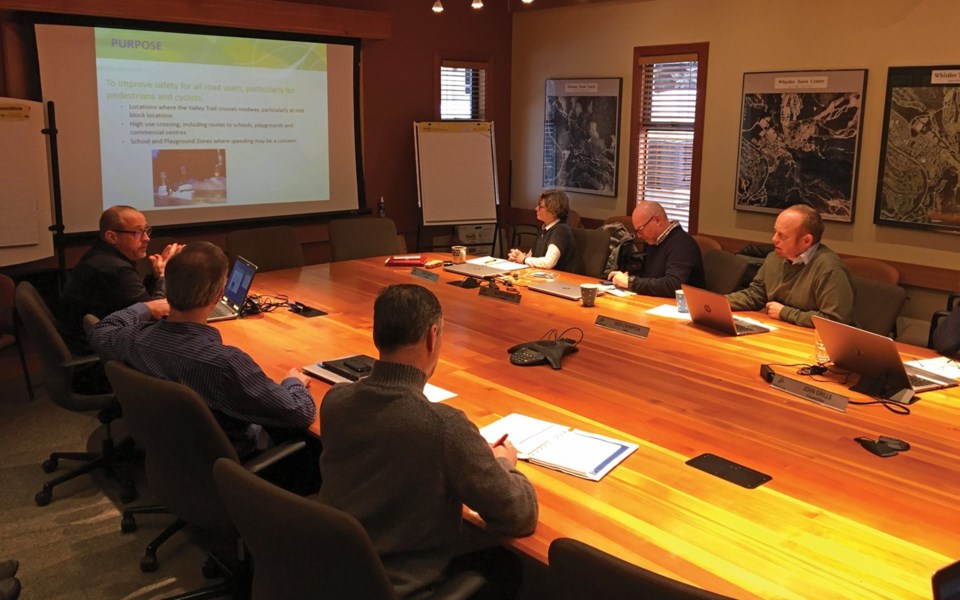those hoping to see reduced speed limits in Whistler neighbourhoods will have to wait.
Council and staff heard an update on the municipality's traffic calming policy at the Jan. 21 Committee of the Whole meeting, including the potential to reduce speed limits in residential zones—a request council heard loud and clear from select Whistler neighbourhoods in 2019.
At its Sept. 3 meeting, council received no fewer than 82 pieces of correspondence urging it to reduce the speed limit on Nicklaus North Boulevard from 50 kilometres/hour to 30 km/h.
Residents in other neighbourhoods like Rainbow and Cheakamus Crossing have also raised the issue of traffic safety.
But Whistler's approach to lowering speed limits is, at the moment, contingent on a resolution out of last year's Union of BC Municipalities Convention.
The resolution urged the province to empower municipalities to impose blanket speed limits on residential streets.
The Motor Vehicle Act (MVA) currently allows municipalities to set lower speed limits if they have proper signage—which could carry significant cost implications.
If the province were to amend the MVA, as the UBCM resolution requested, the RMOW would need to update existing signs, meaning there would be a cost, but it would be lower than if the municipality took the initiative on itself.
Without an amendment to the MVA, more signs would also be needed locally.
"If the province doesn't bring that in, the obligation on us to make it 100-per-cent enforceable would be essentially four signs at every cross intersection, on average. When you go across the community, that's a lot of signage," said GM of infrastructure James Hallisey, adding that there are probably local cul-de-sacs and roadways where people can't reach speeds higher than 30 km/h.
"There's a few places we need to identify that [30 km/hr] is not appropriate, so there's a little bit of work left to do."
An updated RMOW traffic calming policy will be coming back to council later this year, he added.
RMOW staff is reviewing the two approaches to understand the cost difference and potential "sign pollution" impacts, a spokesperson said in a follow-up, as well as looking at potential grant funding for road safety improvement projects.
"My understanding is that the answer is not in the near future, and that's from the ministry. So I think we may want to move forward with the 'no' answer that is out there currently," said Mayor Jack Crompton.
"I'd certainly be interested in understanding the costs, so when this comes back, hopefully in the spring, we could understand what the cost implications are for our community."
In the meantime, RMOW staff is looking at some of the problem areas identified by residents, including Nicklaus North and Cheakamus Crossing.
"I think there was some immediate response down in Cheakamus Crossing with vegetation removal—that was identified as part of the problem down there," Hallisey said.
"It's already a 30 km/h neighbourhood, [and] has been since inception, but that's not the whole solution."
Council first adopted a traffic calming policy in 2001, later amending it in 2004.
The current policy serves as a guide for assessing traffic and safety issues, and is used to develop and implement plans and provide technical guidance when it comes to traffic calming measures.
"Some of the devices that we have installed since the policy was adopted are speed bumps, raised crosswalks around the village, and median islands which are used to slow traffic," said manager of transportation and waste management Andrew Tucker.
"The primary goals and objectives with the traffic calming policy are to calm traffic, making streets safer for everyone, but it's also ... to enhance the livability by reducing traffic speeds, reducing noise and pollution."
Residents with safety concerns can fill out a traffic calming request form at municipal hall or online.




